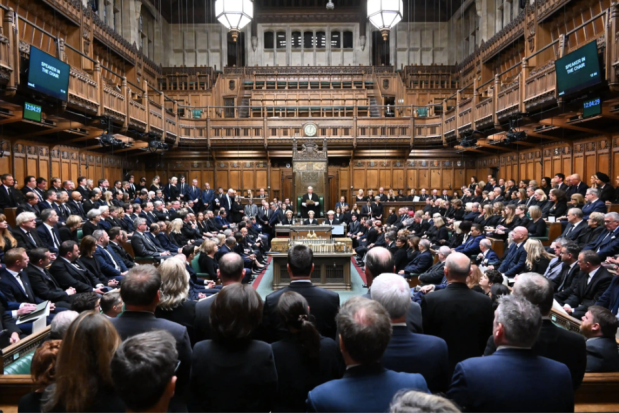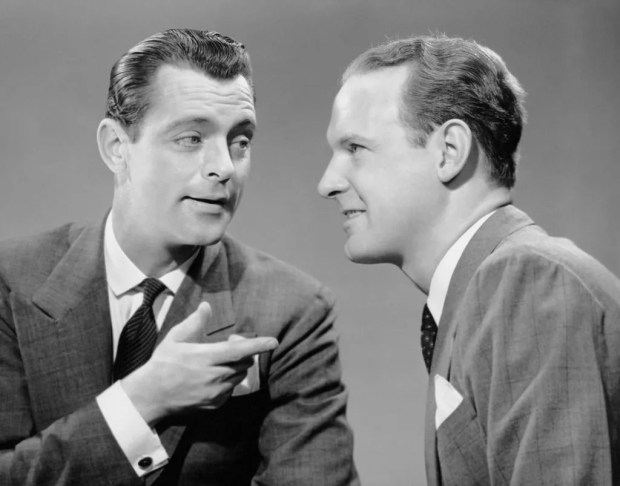Thursday was a curious day for us all. Anyone watching the news was treated to the complexity of commentators trying desperately hard not to say the thing that everyone watching knew was happening: that the Queen was dying, and was possibly already dead. The black ties around the presenters’ necks, the emergency flights from London to Scotland, Parliament breaking up in a state of near disarray told everyone with eyes to see what was happening. That didn’t mean I accepted it; I can’t speak for anyone else but my brain went straight into bargaining mode, desperately hoping this was a false alarm, glued to the rolling coverage on the news.
I was jumpstarted out of my reveries by a text message from a parishioner asking if we were putting on a service for the Queen. We hadn’t been, but within about five minutes we were. There isn’t much any of us can do while our sovereign lies ill, close to death, maybe having died – but we can pray.
But here lay the trouble: prayers for an ill sovereign are very different from prayers for a dead sovereign. Even the National Anthem is different. There was no way I could write a service that could encompass both possibilities. Preparing a service of prayer for the Queen’s recovery was easy. Preparing a service to mark her death was not. Putting finger to keypad felt disloyal. Correcting the words to the National Anthem felt treasonous.
Added to this the National Church hadn’t made it easy. No materials were publicly available – no advice on readings or prayers or hymns. Cathedrals had clearly been thinking about this for a while, and a generous friend from one of them sent over some of the ideas they had been working on. I spent some time pondering what would be appropriate, landing on hymns chosen for the Queen’s wedding, or chosen by her for her mother’s funeral, and some prayers used at the time of George VI’s funeral.
And then we waited. Word on the street, never a very reliable source of news, said that an announcement (Of what? We didn’t know… but we knew) would be made at 6pm, so I invited people to join me in prayer from 7pm. Six pm came and went and no news had emerged. Like Boris’ articles on Remain or Brexit, the two services (one in hope, one in grief) sat on a memory stick uncomfortably together, waiting for me to decide which to use. At 6.30, just as I had resolved on optimism, my phone went wild and the sad messages started flying in with the news that the Queen was dead.
Suddenly all was action. Mourning bands had to be found, readers given their words, organist his tunes – and the blasted photocopying machine broke down. Clutching the memory stick one of my team ran to a print shop, while I went to toll the bell 96 times and prepare the church for its sad task as people started to gather.
I had expected maybe about 10 to 15 people would come. We had 70. The orders of service arrived with about a minute to spare. Raw emotion could be seen and felt. Some had turned up without seeing the news and were given it by friends. There were tears before the service even began.
Knowing that Princess Elizabeth had chosen ‘The Lord’s my shepherd’ for her wedding to Phillip Mountbatten gave that hymn an extra piquancy. Saying the Nunc Dimittis – ‘Lord, now lettest thou thy servant depart in peace’ – had a stark reality it does not normally have at Evensong. But it was the National Anthem that got me: King; him. The Queen is dead, long live the King. There was a feeling of constitutional security about that but it also felt somehow wrong and disloyal.
Or maybe it just felt sad. The Queen is dead. With those four words come an army of hard realities and soft emotions and another whole host of psychological complexities I don’t think I’m well placed to explore.
But in that little service we cobbled together two thoughts really struck me. The first, in the words of the funeral service, ‘we should not grieve like them without hope’. The Queen died in the sure and certain hope of the resurrection to eternal life. Our grief should be tempered by that hope. And she died in the hope of a smooth succession – and that means getting used to new words and new pronouns and to be willing to sing, with heart and voice, God Save the King.
Got something to add? Join the discussion and comment below.
Get 10 issues for just $10
Subscribe to The Spectator Australia today for the next 10 magazine issues, plus full online access, for just $10.



















Comments
Don't miss out
Join the conversation with other Spectator Australia readers. Subscribe to leave a comment.
SUBSCRIBEAlready a subscriber? Log in